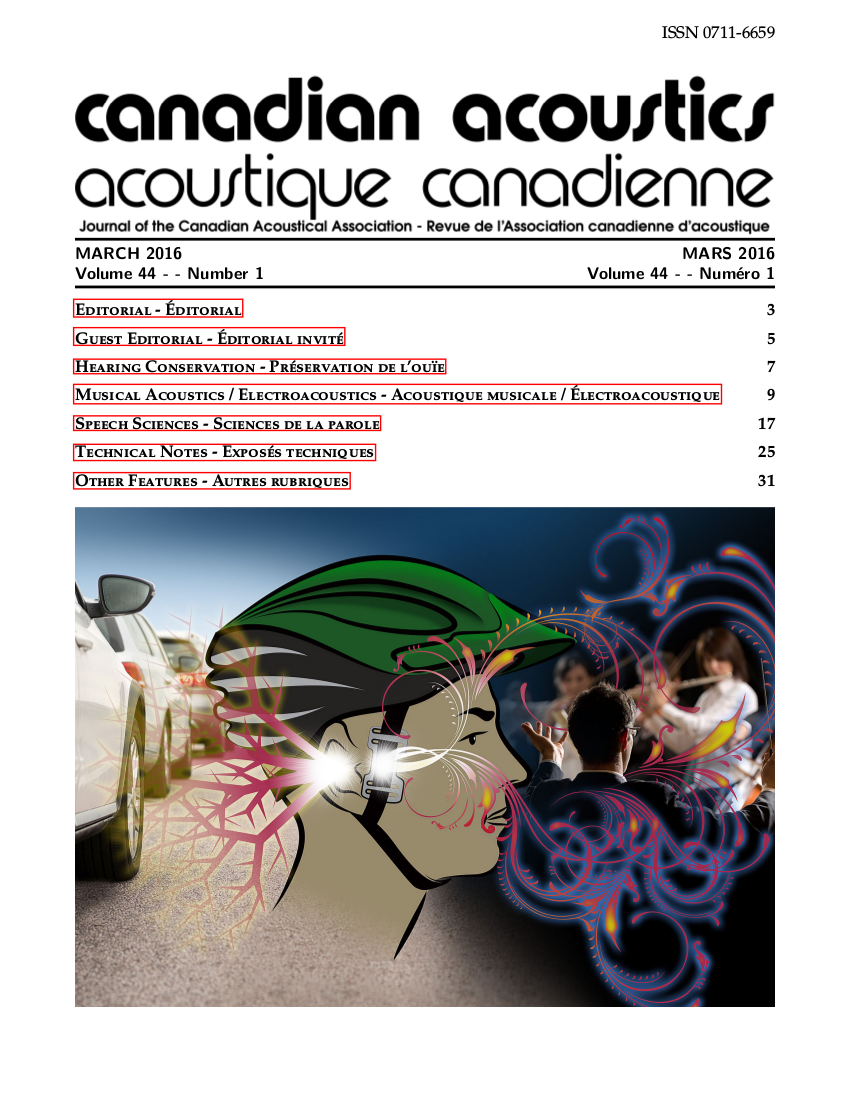My Ears Are Alight
Mots-clés :
système auditif, plage dynamique, plage de fréquences, la parole dans le bruit, des mots mal entendus, perte auditiveRésumé
Les capacités du système auditif humain sont phénoménales. La plage dynamique qu’il supporte, la plage de fréquences qu’il couvre, et également, sa capacité à détecter et identifier la parole en présence de bruits parasites sont étonnants. Dans la vie quotidienne, on utilise ces capacités de différentes façons: la communication orale, les alertes et les alarmes, l’analyse des appareils et des machines comme les ordinateurs et les voitures. Par exemple, "Est-ce que mon appareil est en marche ?", "Est-ce qu’il semble fonctionner normalement ou est-ce que quelque chose ne va pas?”. De plus, nous utilisons aussi notre système auditif pour des formes de divertissement diverses. Le revers de la médaille de ses capacités magnifiques est qu’elles posent des difficultés par exemple lors de la conception des bâtiments, des machines et d’appareils électroniques comme les téléphones mobiles, les ordinateurs, les écouteurs, les microphones, etc. Et bien que nous ayons cette capacité phénoménale à comprendre la parole dans les situations difficiles, on a souvent du mal à entendre ou du mal à comprendre. De plus, le système auditif humain s’abîme facilement. Ce document présente d’anciens et de nouveaux résultats de recherches liés aux capacités du système auditif et quelques-uns des challenges posés par ce dernier. Le contenu de cet article a été présenté à la Semaine de l’Acoustique (Acoustics Week) au Canada 2014 comme une des trois présentations principales invitées.Fichiers supplémentaires
Publié-e
Comment citer
Numéro
Rubrique
Licence
Author Licensing Addendum
This Licensing Addendum ("Addendum") is entered into between the undersigned Author(s) and Canadian Acoustics journal published by the Canadian Acoustical Association (hereinafter referred to as the "Publisher"). The Author(s) and the Publisher agree as follows:
-
Retained Rights: The Author(s) retain(s) the following rights:
- The right to reproduce, distribute, and publicly display the Work on the Author's personal website or the website of the Author's institution.
- The right to use the Work in the Author's teaching activities and presentations.
- The right to include the Work in a compilation for the Author's personal use, not for sale.
-
Grant of License: The Author(s) grant(s) to the Publisher a worldwide exclusive license to publish, reproduce, distribute, and display the Work in Canadian Acoustics and any other formats and media deemed appropriate by the Publisher.
-
Attribution: The Publisher agrees to include proper attribution to the Author(s) in all publications and reproductions of the Work.
-
No Conflict: This Addendum is intended to be in harmony with, and not in conflict with, the terms and conditions of the original agreement entered into between the Author(s) and the Publisher.
-
Copyright Clause: Copyright on articles is held by the Author(s). The corresponding Author has the right to grant on behalf of all Authors and does grant on behalf of all Authors, a worldwide exclusive license to the Publisher and its licensees in perpetuity, in all forms, formats, and media (whether known now or created in the future), including but not limited to the rights to publish, reproduce, distribute, display, store, translate, create adaptations, reprints, include within collections, and create summaries, extracts, and/or abstracts of the Contribution.


